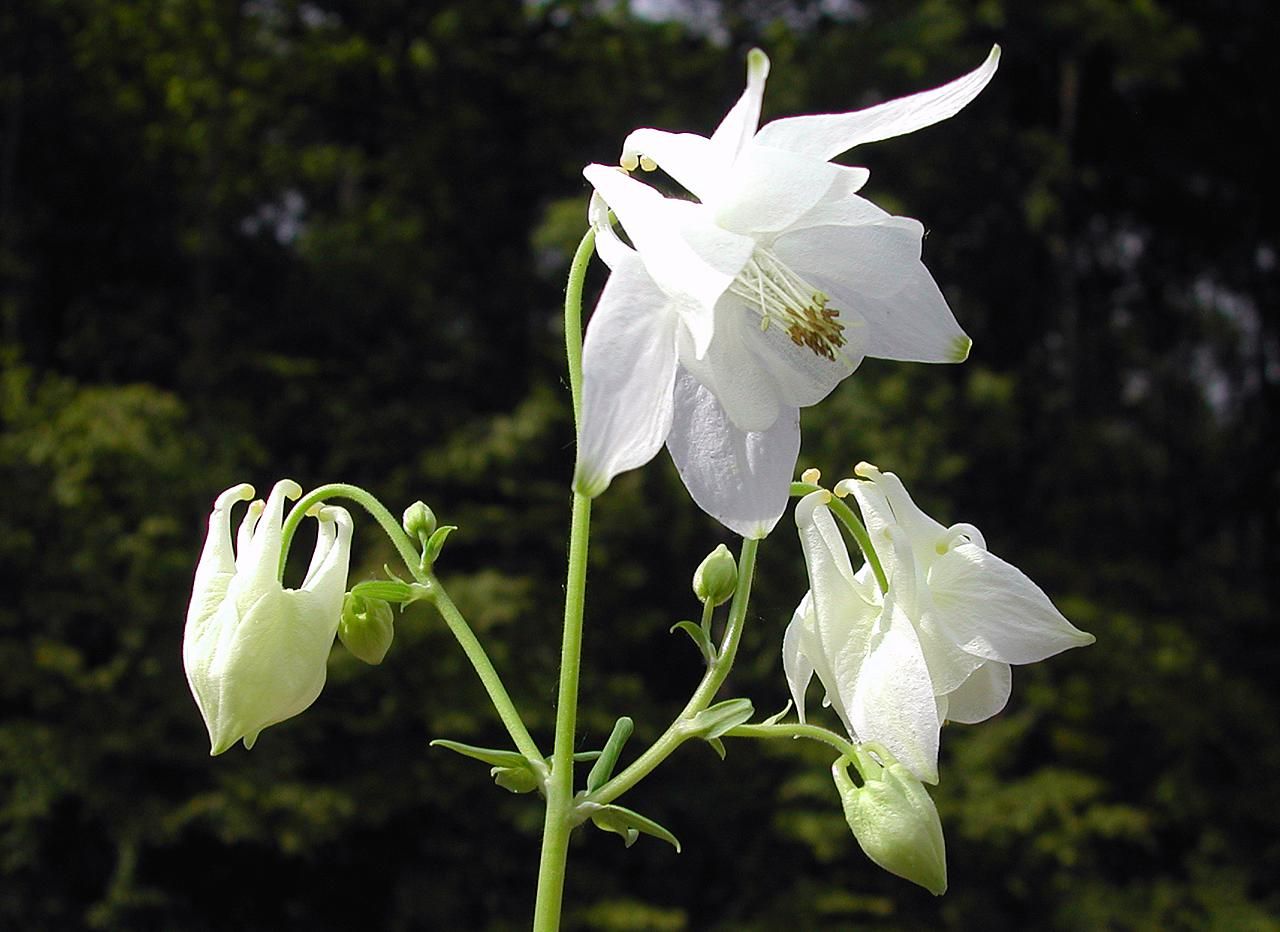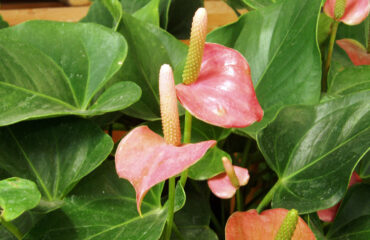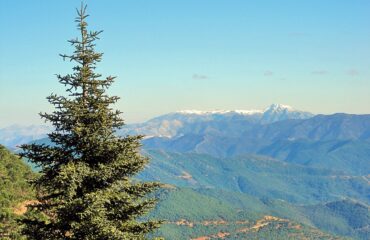Aquilegia vulgaris, commonly known as Common Columbine, is a perennial plant native to Europe. It is cherished for its unique, nodding flowers that come in a wide range of colors including blue, purple, pink, red, white, and yellow. The flowers have distinctive, backward-pointing spurs and are often bi-colored. The foliage is delicate and fern-like, adding a soft texture to garden beds. Columbines are known for their adaptability and can thrive in various garden conditions.
Preferred Growing Conditions:
- Soil Type: Prefers well-drained, fertile soil but can tolerate a range of soil types including sandy and clay soils.
- Sunlight: Thrives in full sun to partial shade; in hotter climates, partial shade is preferred.
- Temperature: Hardy in USDA zones 3-8; tolerates a wide range of temperatures but prefers cool to moderate climates.
- Water Needs: Moderate watering; keep the soil evenly moist but avoid waterlogging.
Aquilegia Vulgaris (Common Columbine) Propagation Methods:
1. Seed Propagation:
Seed propagation is one of the most common methods for growing Aquilegia vulgaris, as it allows for the development of new color variations and hybrids. However, it requires patience as seeds can take time to germinate and grow to flowering size.
- Seed Collection and Preparation:
- Collect seeds from mature plants once the seed pods have dried and turned brown.
- Gently open the pods to release the small, black seeds.
- Clean the seeds and allow them to dry for a few days in a cool, dry place.
- Seeds benefit from cold stratification to break dormancy. Place seeds in a moistened paper towel or sand and refrigerate them at 40°F (4°C) for 4-6 weeks.
- Sowing Techniques:
- After stratification, sow seeds on the surface of a well-draining seed-starting mix.
- Lightly press the seeds into the soil without covering them, as they need light to germinate.
- Mist the soil surface to keep it moist and cover the container with plastic wrap or a clear lid to maintain humidity.
- Place the container in a bright, indirect light location with temperatures around 60-65°F (15-18°C).
- Germination typically takes 2-3 weeks, but can vary depending on conditions.
- Care for Seedlings:
- Once seedlings emerge, remove the cover to provide better air circulation.
- Keep the soil moist but not soggy.
- Provide bright, indirect light to prevent leggy growth.
- When seedlings have developed a few sets of true leaves and are sturdy enough to handle, transplant them into individual pots or directly into the garden after the last frost.
2. Division:
Division is another effective method to propagate Aquilegia vulgaris, especially when you want to maintain the characteristics of a specific plant.
- Timing:
- The best time to divide Columbine is in early spring before new growth begins, or in autumn after flowering has finished.
- Method:
- Carefully dig up the entire plant, being cautious not to damage the delicate root system.
- Shake off excess soil to expose the roots and crown.
- Use a sharp knife or garden spade to divide the clump into smaller sections, ensuring each division has several buds or growing points and a portion of roots.
- Remove any dead or damaged roots and foliage.
- Replanting:
- Replant the divisions immediately in prepared soil enriched with compost or organic matter.
- Plant at the same depth as the original plant, spacing divisions 12-18 inches apart to allow room for growth.
- Water thoroughly to settle the soil around the roots.
- Care After Division:
- Keep the newly divided plants well-watered as they establish.
- Mulch around the base to retain soil moisture and regulate temperature.
- Protect from strong winds and harsh sunlight during the initial recovery period.
3. Root Cuttings:
Although less common, root cuttings can also be used to propagate Aquilegia vulgaris. This method is useful when you want to clone a plant exactly, preserving its genetic makeup.
- Timing:
- Best done in late autumn or early winter when the plant is dormant.
- Preparation:
- Dig up the plant and clean the roots.
- Select healthy, thick roots and cut them into 2-3 inch sections.
- Allow the cut surfaces to dry and callous over for a few hours.
- Planting:
- Plant the root cuttings horizontally in pots filled with a light, well-draining potting mix.
- Cover lightly with soil and water to settle the soil.
- Place the pots in a cold frame or a sheltered area outdoors.
- Keep the soil moist but not waterlogged.
- Rooting and Growth:
- Roots will begin to develop over winter, and new shoots should appear in spring.
- Once new growth is visible, gradually acclimate the plants to normal growing conditions.
4. Stem Cuttings:
While not commonly used for Aquilegia vulgaris, stem cuttings can be a method to propagate if seed or division is not preferable.
- Types of Cuttings:
- Take softwood or semi-hardwood cuttings from healthy, non-flowering stems in late spring or early summer.
- Preparation:
- Cut 4-6 inch sections from the stem, just below a leaf node.
- Remove the lower leaves and dip the cut end in rooting hormone to encourage rooting.
- Planting:
- Insert the cuttings into a well-draining potting mix, making sure the nodes are buried.
- Water lightly and cover the pot with a plastic bag or place in a propagation tray with a clear lid to maintain humidity.
- Place in a bright, indirect light location.
- Rooting:
- Roots should develop in 4-6 weeks.
- Once roots are established and new growth appears, gradually acclimate the cuttings to lower humidity and transplant them into individual pots.
Care for Newly Propagated Plants:
- Transplant seedlings or divisions into a suitable location in the garden with well-draining soil and adequate sunlight.
- Water regularly to help establish strong root systems, but avoid overwatering.
- Protect young plants from extreme weather conditions and pests.
- Fertilize with a balanced, slow-release fertilizer to encourage healthy growth and flowering.
Common Challenges and Solutions:
- Powdery Mildew: Ensure good air circulation and avoid overhead watering to reduce humidity around the plants.
- Leaf Miners: Look for signs of leaf miners and remove affected leaves. Use neem oil or insecticidal soap to control the larvae.
- Self-Seeding: Columbines can self-seed prolifically. To manage this, deadhead flowers before seeds develop or collect seeds for controlled propagation.
Additional Tips:
- Mulch around the base of the plants to retain moisture and suppress weeds.
- Deadhead spent flowers to prolong the blooming period and prevent unwanted self-seeding.
- Divide plants every 3-4 years to maintain vigor and prevent overcrowding.
- Columbines attract bees, butterflies, and hummingbirds, making them excellent additions to pollinator gardens.
Propagating Aquilegia vulgaris can be a rewarding experience, offering an array of beautiful blooms and lush foliage to your garden. Whether starting from seeds, divisions, or cuttings, with proper care and attention, these plants will thrive and bring lasting beauty to your landscape.
Share this article



